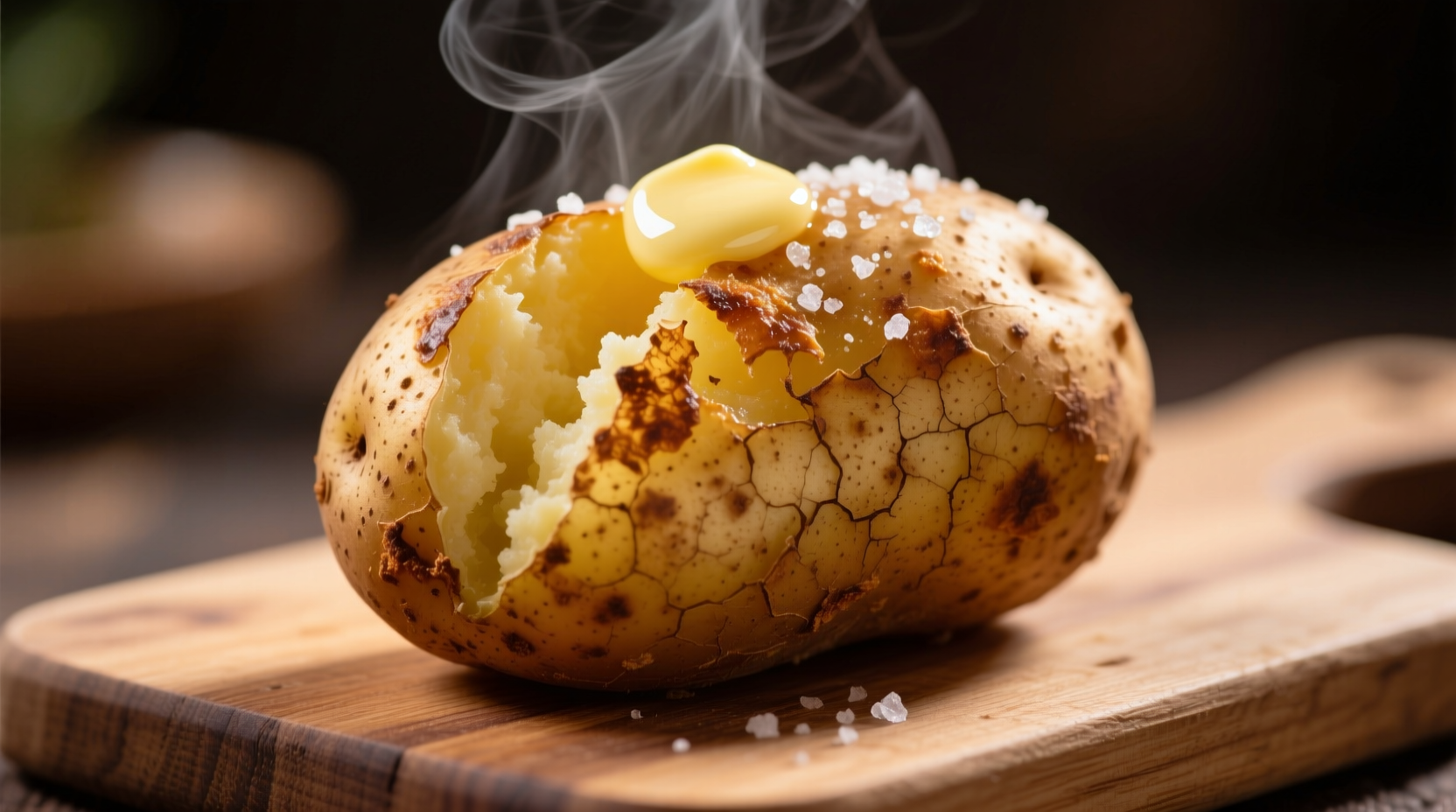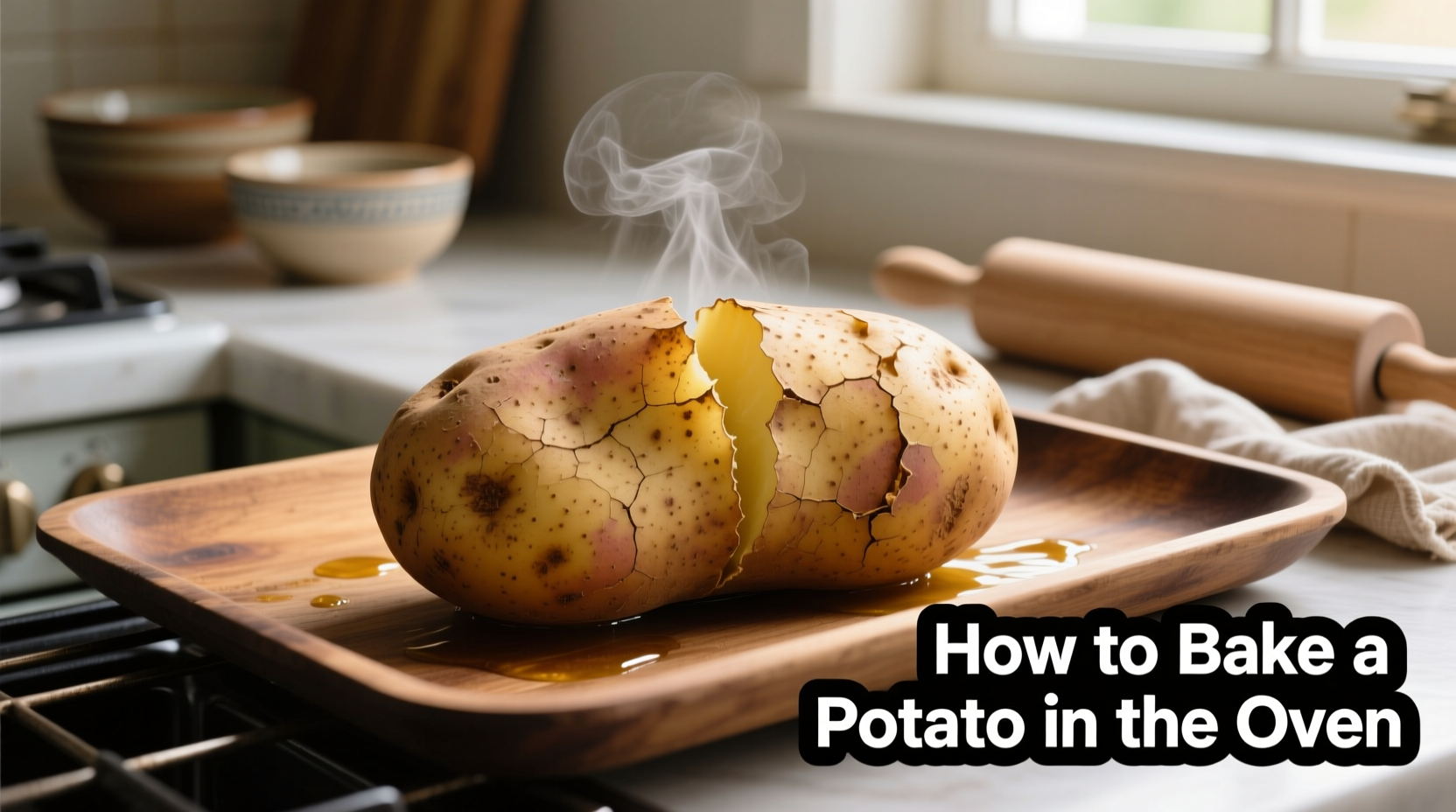The perfect baked potato requires just 45-60 minutes at 400°F (204°C) with proper preparation. This foolproof method delivers crispy skin and fluffy interior every time—no special equipment needed. Follow these professional chef-tested steps for restaurant-quality results at home.
There's nothing quite like a perfectly baked potato—crisp skin giving way to fluffy, steaming interior. Yet many home cooks struggle with uneven cooking, soggy skins, or bursting potatoes. The secret lies not in complicated techniques, but in understanding the simple science behind even heat distribution and moisture control.
Why This Oven Method Works Every Time
Baking potatoes seems straightforward, but the difference between mediocre and magnificent comes down to precise temperature control and preparation. Potatoes contain about 80% water, which turns to steam during baking. When trapped, this steam creates pressure that can cause bursting. The USDA recommends cooking potatoes to an internal temperature of 210°F (99°C) for optimal texture—this isn't guesswork, but food science.
| Stage | Internal Temperature | Texture Result |
|---|---|---|
| 185°F (85°C) | Undercooked | Dense, waxy texture |
| 200°F (93°C) | Almost done | Good but not fluffy |
| 210°F (99°C) | Perfect | Maximum fluffiness |
| 220°F+ (104°C+) | Overcooked | Dry, crumbly texture |
What You'll Need
- Russet potatoes (3-8 ounces each for even cooking)
- Olive oil or melted butter
- Kosher salt
- Fork or skewer
- Baking sheet
- Instant-read thermometer (optional but recommended)
Step-by-Step Baking Process
Preparation Phase: Setting Up for Success
Start with clean, dry potatoes. Scrub them thoroughly under cold water using a vegetable brush to remove dirt. Pat completely dry with paper towels—moisture on the skin prevents crispiness. This critical drying step makes the difference between soggy and crisp skin.
Poke each potato 8-10 times with a fork, making holes about ¼ inch deep. This allows steam to escape during baking, preventing bursting. According to food safety guidelines from the FDA, properly vented potatoes reduce the risk of uneven cooking that can create food safety concerns.

Baking Phase: The Critical Temperature Window
Preheat your oven to 400°F (204°C)—this temperature creates the ideal balance between skin crisping and interior cooking. Place potatoes directly on the middle oven rack with a baking sheet on the rack below to catch any drips.
Bake for 45-60 minutes, depending on size. A 6-ounce potato typically takes 50 minutes. Flip potatoes halfway through baking for even browning. The potatoes are done when:
- They reach 210°F (99°C) internally
- Skin appears crisp and slightly wrinkled
- They give slightly when squeezed with oven mitts
Finishing Phase: Maximizing Flavor and Texture
Remove potatoes from the oven and immediately rub with ½ teaspoon of kosher salt per potato—this creates the signature crisp, salty skin that professional chefs use. Let rest for 5 minutes before cutting.
Make a lengthwise slit and gently squeeze the ends toward the center to open. Add your favorite toppings while the potato is hot for maximum flavor absorption. For restaurant-style presentation, fluff the interior with a fork before adding toppings.
Pro Tips for Perfect Results Every Time
Avoid the foil trap: While some recipes recommend wrapping potatoes in foil, this actually steams them rather than baking, resulting in soggy skin. Save foil for keeping cooked potatoes warm after baking.
Size matters: Select potatoes of similar size for even cooking. Mixing large and small potatoes guarantees some will be overcooked while others remain underdone.
Leftover storage: According to USDA food safety guidelines, store cooled baked potatoes in the refrigerator within two hours. Consume within 3-4 days for best quality and safety. Never store baked potatoes in foil at room temperature.
Serving Suggestions for Maximum Enjoyment
The classic butter and sour cream combination never disappoints, but consider these chef-recommended variations:
- Loaded potato: Crispy bacon, cheddar cheese, and chives
- Mediterranean style: Olive oil, feta cheese, and roasted garlic
- Healthy option: Greek yogurt, steamed broccoli, and lemon zest
For optimal flavor pairing, serve baked potatoes with grilled proteins or hearty salads. The natural starchiness complements both rich and light dishes.
Troubleshooting Common Issues
Problem: Soggy skin
Solution: Ensure potatoes are completely dry before baking and avoid wrapping in foil. Increase oven temperature by 25°F for the last 15 minutes.
Problem: Undercooked center
Solution: Next time, reduce potato size or increase baking time. Use a thermometer to verify 210°F internal temperature.
Problem: Bursting potatoes
Solution: Poke more holes (10-12) and ensure holes penetrate deeply enough to release steam.











 浙公网安备
33010002000092号
浙公网安备
33010002000092号 浙B2-20120091-4
浙B2-20120091-4